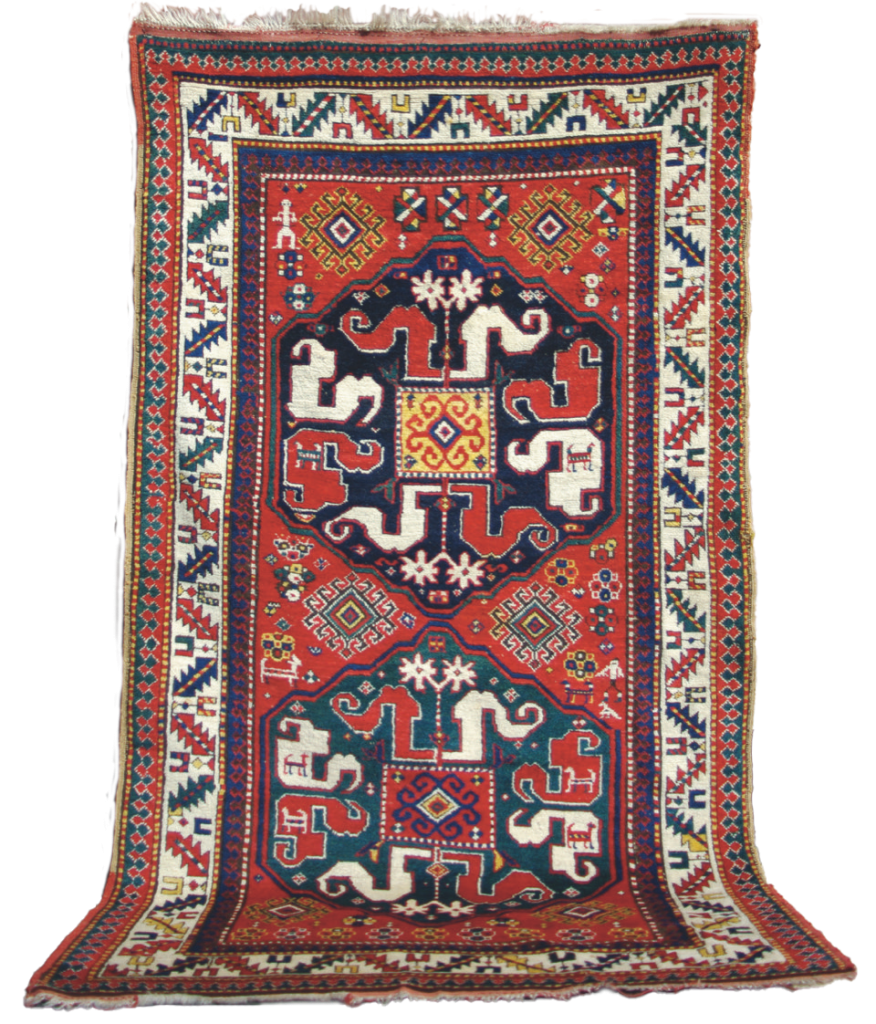
The Caucasus, between the Black and Caspian Seas, is a melting pot of different tribal and ethnic groups. Prominent amongst the rug weavers are the Azeri Turks, the Armenians, the Kurds and the Talish.
Caucasian rugs of the 19th century are characterised by bold, strongly geometric design and vibrant natural dyes. They have long been collected because of these great artistic qualities. The Victoria and Albert Museum in London acquired the greater part of their entire Caucasian collection in the 1880’s.
Like many other groups of rugs from the Caucasus, this particular group is known by names that signify a design type. This type, also known as Chondorezk, is commonly called a cloud band Kazak from the Karabagh region of the southern Caucasus. This refers to the two monumental medallions in the field that contain serpent-like forms which many believe owe their inspiration to Chinese cloud band motifs. Still others consider them to be remnant forms of the dragon and phoenix in conflict, as found in earlier Caucasian rugs of the 18thcentruy.
With its clear and wide ranging palette of natural dyes, this rug from the late 19th century has many other interesting features. Two ghost-like human figures stand legs akimbo in the field and a plethora of stylised animal, bird and geometric motifs provide an endless source of fascination.
